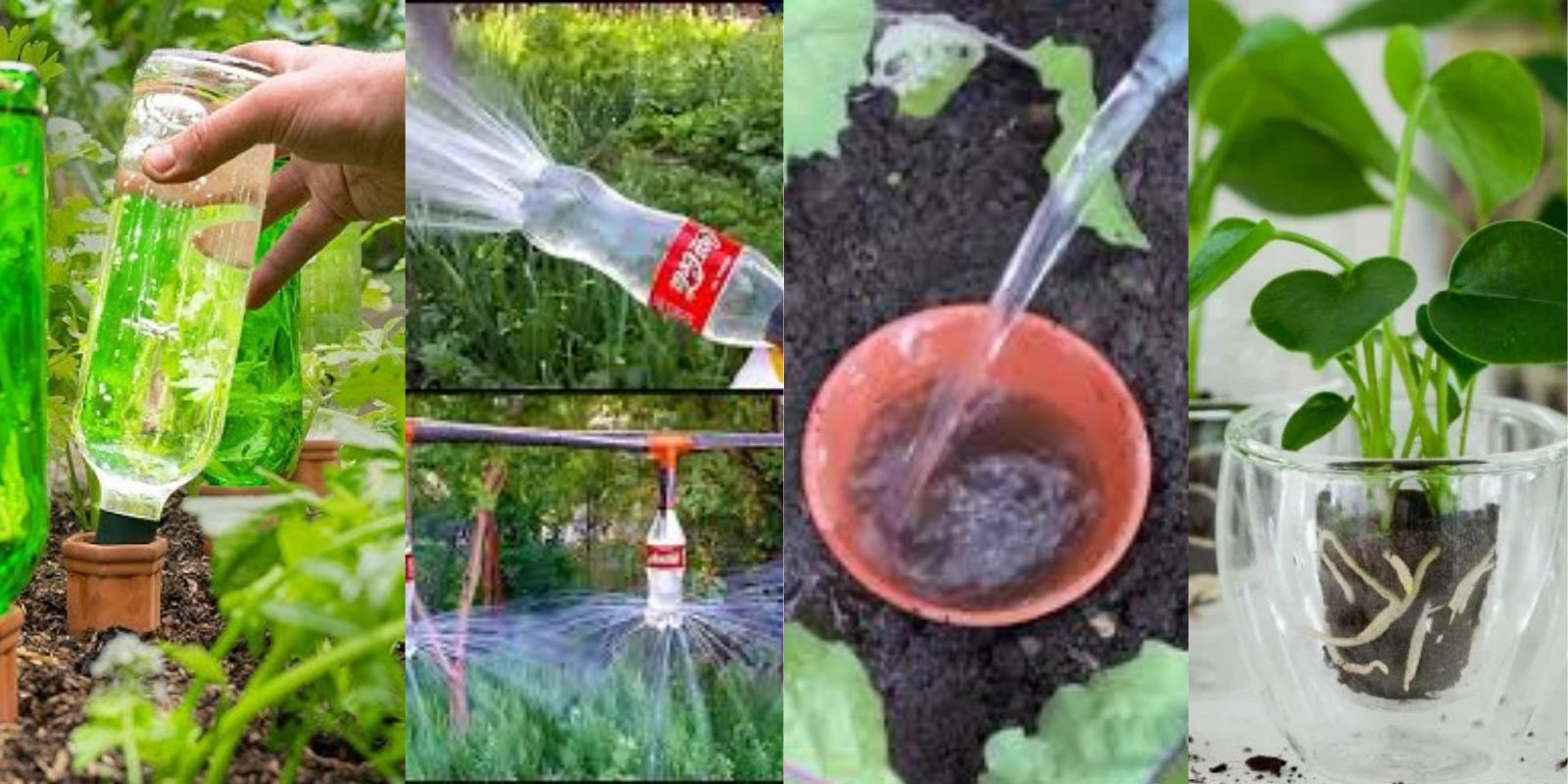Watering your plants may seem like a straightforward task, but improper hydration can stunt growth, cause root rot, or leave your greenery parched. This ingenious trick, involving a simple plastic bottle, will revolutionize how you hydrate your plants, saving water and ensuring optimal growth. Let’s dive into this life-changing method and explore why it’s a game-changer for every gardener.
The Problem with Traditional Watering Methods
Most gardeners rely on sprinkling or direct watering, which can lead to common issues:
- Overwatering: This drowns roots, cutting off essential oxygen supply.
- Underwatering: Leads to dry, unhealthy soil, especially for deep-rooted plants.
- Water Wastage: Overhead watering often results in evaporation or runoff.
Traditional watering methods can be inefficient and detrimental, especially in hot or arid climates. This new trick addresses these problems and brings simplicity and efficiency to plant care.
The Revolutionary Bottle Watering Trick
This method uses a readily available item: a plastic bottle. This trick is especially effective for container gardening, raised beds, or even ground-planted crops. Here’s how to do it:
Materials Needed
- A clean plastic bottle (1-2 liters work best)
- A sharp tool to poke holes (like a nail or screwdriver)
- Soil or a small spade for burying
- Water
Step-by-Step Guide
1. Prepare the Bottle
- Take a plastic bottle and remove any labels or stickers.
- Using a sharp tool, poke small holes evenly around the lower half of the bottle. Avoid making holes too large, as this could result in water draining too quickly.
2. Bury the Bottle
- Dig a small hole near the base of your plant. Ensure it is close enough to hydrate the roots but not so close as to disturb them.
- Place the bottle into the hole with the neck of the bottle above ground level for easy refilling.
- Pack the soil around the bottle to secure it in place.
3. Fill the Bottle with Water
Pour water into the bottle until it’s full. The water will slowly seep out of the holes, hydrating the plant’s roots directly over time.
4. Monitor and Refill
Depending on the weather and plant type, check the bottle every few days to refill it.
Why This Trick Works
This method offers numerous benefits:
1. Efficient Watering
The slow-release system ensures water reaches the plant’s roots directly, minimizing evaporation and surface runoff.
2. Saves Time and Effort
With the bottle providing consistent hydration, you won’t need to water your plants daily, giving you more time to focus on other gardening tasks.
3. Reduces Overwatering Risks
Since water is released gradually, it avoids waterlogging the soil and prevents root rot.
4. Perfect for Busy Gardeners
If you’re frequently away, this self-watering system keeps your plants hydrated and healthy.
5. Eco-Friendly and Cost-Effective
Reusing plastic bottles helps reduce waste, and the method is free—no need for expensive irrigation systems.
Customizing the Trick for Different Plants
For Small Pots
Use smaller bottles, such as a 500ml water bottle, to avoid overhydrating small plants.
For Large Plants or Trees
Opt for a 2-liter bottle and poke slightly larger holes to accommodate the plant’s higher water needs.
For Flowering Plants
Combine this watering method with a diluted liquid fertilizer in the bottle for a consistent nutrient supply.
For Arid Climates
Place mulch around the bottle to retain additional soil moisture and protect the water from evaporating too quickly.
Tips for Success
- Test Hole Size: Start with smaller holes and adjust based on the water release rate.
- Clean Bottles: Ensure bottles are free from harmful residues that could affect plant health.
- Seasonal Adjustments: In rainy seasons, remove or cover the bottles to avoid oversaturation.
- Group Placement: For garden beds, space bottles evenly to ensure uniform hydration.
The Science Behind It
The bottle system mimics natural hydration, where water infiltrates slowly into the soil, ensuring deep and consistent moisture. This method reduces surface evaporation and encourages plants to develop stronger, deeper roots—critical for long-term health and resilience.
Environmental Benefits
This trick isn’t just good for your garden—it’s good for the planet. Here’s how:
- Reduces Water Waste: Ensures every drop of water benefits your plants.
- Recycles Plastic: Gives a second life to used bottles, reducing plastic waste.
- Saves Resources: Eliminates the need for advanced irrigation systems or frequent watering.
Who Can Use This Trick?
Whether you’re an experienced gardener or a beginner, this method is suitable for:
- Urban gardeners with limited space.
- Busy individuals who can’t water daily.
- Anyone looking to garden sustainably and save money.
Common Questions
1. Can I use this for all types of plants?
Yes, but adjust bottle size and hole placement based on the plant’s water needs.
2. Will this work in extreme heat?
Absolutely! Add mulch or place bottles deeper in the soil for better results.
3. Can I use other materials instead of plastic bottles?
Yes, clay pots or reusable watering stakes are good alternatives.
Gardener Testimonials
- “I started using this method for my tomato plants, and they’ve never looked healthier!” – Sarah, California
- “This trick saved my garden during a dry spell—simple yet effective!” – Raj, India
Conclusion: A Simple Change, Big Results
Watering your plants doesn’t have to be a chore. With this clever bottle trick, you’ll save water, reduce effort, and help your plants thrive like never before. It’s cost-effective, eco-friendly, and incredibly easy to implement.
💬 Ready to give it a try? Share your results or watering hacks in the comments below!
#GardeningHacks #WaterWiseGardening #DIYPlantCare #EcoFriendlyLiving #SustainableGardening #PlantCareTips #GrowYourGarden

